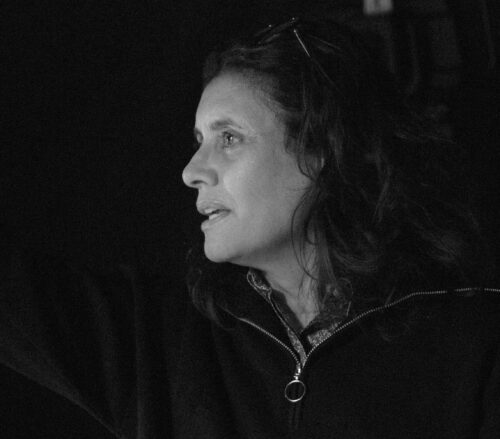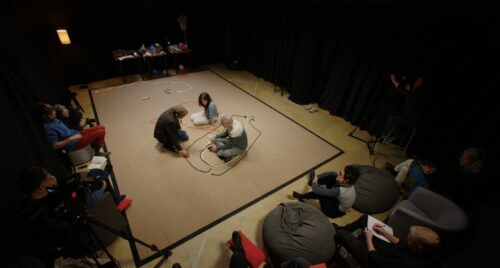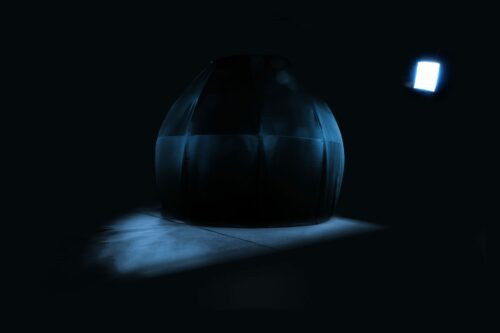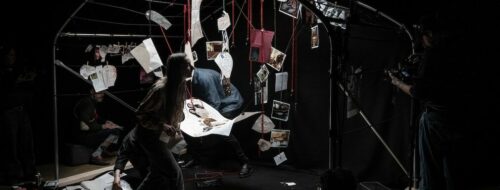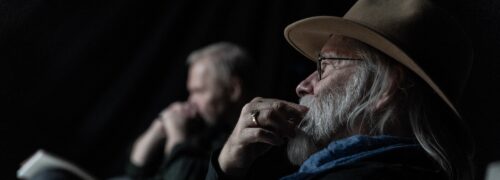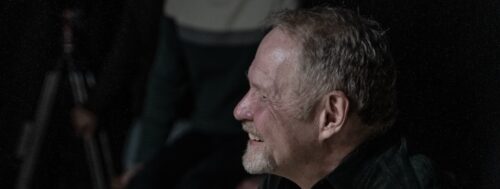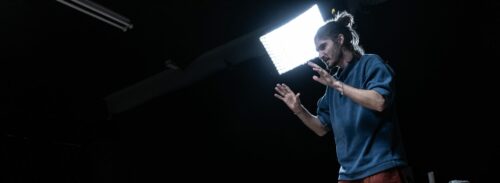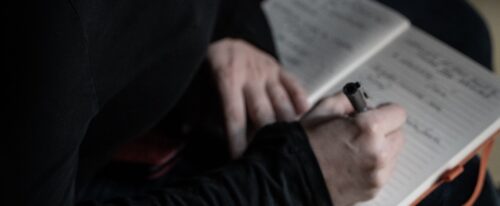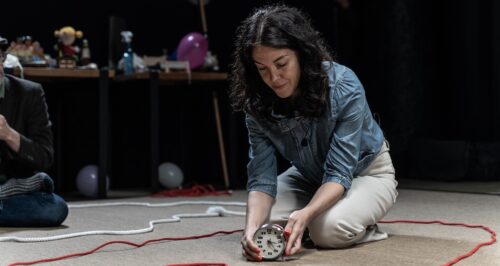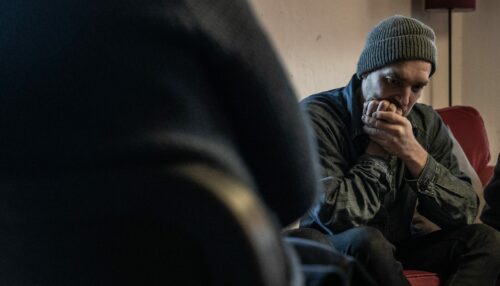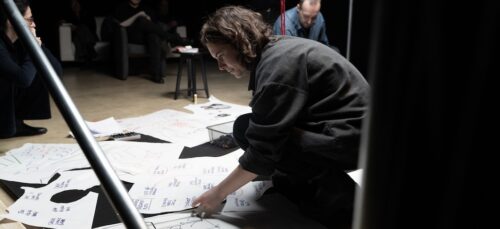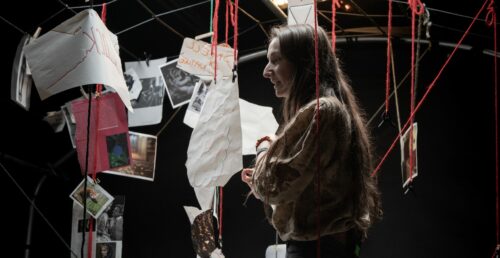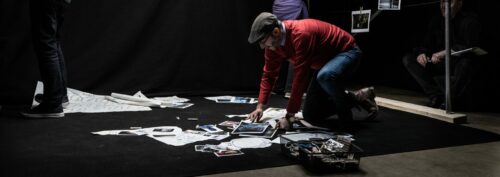Samira Bourgeois-Bougrine
Samira Bourgeois-Bougrine is a lecturer in psychology and cognitive ergonomy at the University of Paris Cité. Her early research focused on analyzing and controlling the risk of errors and accidents related to reduced vigilance, increased fatigue, and workload in high-risk areas. Since 2010, she has been exploring the approaches that humans naturally adopt to solve problems, manage constraints, and make decisions in various fields, ranging from high-risk situations to writing fiction scripts.
— As part of its 5th season, the StoryTANK team wanted to try a new experiment, under the guidance of six passionate and captivating researchers. The goal was to test and film the emergence of story ideas within experimental frameworks created by LA FABRIQUE DES MONDES — a unique initiative in Europe, developed at Le Groupe Ouest since 2023, under the auspices of the French Ministry of Culture.
The experience was offered to six screenwriters or filmmakers from six different European countries. Here, the StoryTANK provides an opportunity to explore and shed light on the creative process.
Below, a debrief by Samira Bourgeois-Bougrine, as she reflects on her experience.
SCAFFOLDING THE STORY, WITH OR WITHOUT AMBIGUITY
“ The scaffolding technique for increasing the concretization of the story, to always go higher in the quest.”
As part of the StoryTANK this year, I reflected on a tool we use in research, which is the “need for closure.” Some people can’t stand ambiguity: once they have a good lead, they’ll grab it and build around it. They’ll make up their minds very quickly, or at least faster than some people who aren’t bothered by ambiguity. With more ambiguity, there’s a dialogical approach to story composition. Not fixing even the main character’s gender shows a greater openness to whatever might happen. Two approaches that are fundamental in accelerating the pace, in the technique of “scaffolding”/scaffolding for increasing and gradual concretization, to always go higher in the quest.
THE CAVE
COMPOSING THE NARRATIVE: WALKING THROUGH HISTORY
“All these images are in no way an end in themselves, but a means of transportation.”
It’s not, in fact, the visual that we’re looking for, it’s not where we’re going. All these images are in no way an end in themselves, but a means of transportation.

TELLING THE STORY: TAKING IT, CUTTING IT UP, PUTTING IT TOGETHER
“With the Cave, we stop thinking that the idea is only cerebral; the idea is also outside of ourselves: it’s there.”
When one of the groups drew swirling wasps on a piece of paper, in the center, which they hung early on to populate the ceiling of the Cave, the wasps suspended by strings with pincers became central and blocked their path, hindering them. The idea is to know how this action followed by another could influence the following ideas of the ongoing story.

THE BLACK ROOM
COMBINING INDIVIDUAL AND COLLABORATIVE STORYTELLING EXPERIENCES
“ The Black Room provides security and intimacy for unfolding the story”
The Black Room provides security and intimacy: two very important elements for storytelling. When you feel in a safe environment: where there is no threat, where you can express yourself, where there is less judgment, without outside scrutiny. There is also the darkness and finally the posture. We sit, a little slumped, very comfortable, arms or legs outstretched, even though the space is relatively small. Others had their knees almost under their chins, a slightly tense attitude. A very individual storytelling experience, unlike the group game, for the Plateau, an experience of collaborative storytelling.
PLAYING WITH THE BRAIN TO SIMULATE STORY COMBINATIONS
“We need moments when we block out visual information because it’s disruptive and doesn’t allow us to access our deepest memory, our feelings.”
We need moments when we block out visual information because it’s disruptive and doesn’t allow us to access our deepest memory, our feelings. In the brain, we have a control center that looks outward and inward, meaning it will direct our attention toward something that scares us, for example, a dangerous animal. Or, for example, in a safe environment, it will direct it inward. And so, when we close our eyes or when we’re in the dark, this control center is somewhat muted, somewhat turned off . We then access deep memory, and new things emerge, directing us towards interesting combinations to compose the story, to simulate them mentally.

ABSTRACTION AS THE IMPETUS FOR STORYTELLING
“When we’re in the dark and we have this feeling of security, we process information holistically: we see the forest and not the trees.”
The feeling of security felt in the Black Room is one of the triggers of what we call holistic processing. To simplify: concrete processing is when we look at a tree, and holistic processing is when we look at the forest. So, when we’re in the dark and we have this feeling of security, we process information holistically. And when information processing is holistic, we think abstractly.
